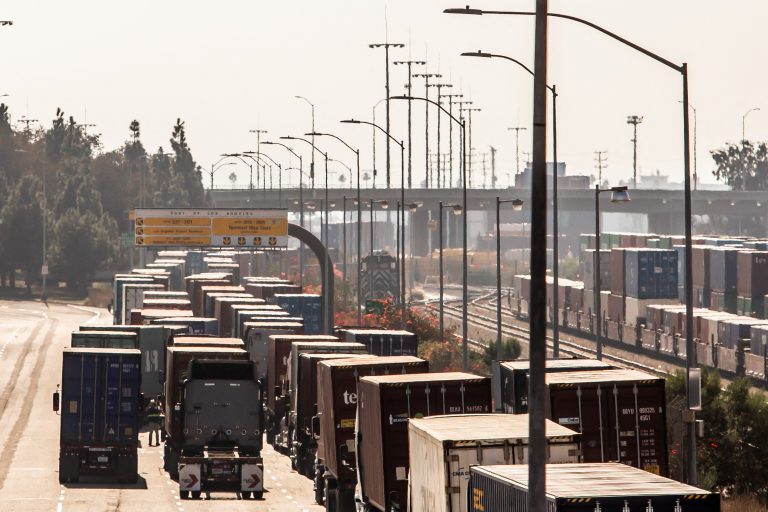According to data from the U.S. Department of Transportation (DOT) as of April 1, 2022 10,276 commercial truck drivers have tested positive for cannabis use and have been removed from the roads, a 32.6 percent increase year over year. The violations are adding to an already dire situation in the industry which was already short some 80,000 drivers according to the American Trucking Association.
As more and more states legalize the recreational use of cannabis more and more truck drivers are finding themselves in a quagmire of regulations impacting both domestic and international operations.
Currently, 37 states permit the use of cannabis for medicinal purposes and 19 states have legalized the recreational use of the plant.
Cross-country truckers are facing inconsistent regulations from region to region and are faced with violations even if hemp-based products like CBD are used off duty due to the DOT’s zero-tolerance policy at the federal level.
According to a DOT handbook for commercial truck drivers, “While states may allow medical use of marijuana, federal laws and policy do not recognize any legitimate use of marijuana. Even if a state allows the use of marijuana, DOT regulations treat its use as the same as the use of any other illicit drug.”
Success
You are now signed up for our newsletter
Success
Check your email to complete sign up
Under DOT regulations, commercial drivers are regularly tested for drug use, including cannabis. Tests are conducted prior to starting a new job and drivers are also tested at random and following accidents.
In early 2020, the DOT’s Federal Motor Carrier Safety Administration (FMCSA) increased random drug testing from 25 percent to 50 percent of all drivers. Should a driver fail just one test it can be grounds for dismissal under DOT regulations.
In the best case scenario the driver is temporarily taken off the road to complete an evaluation with a substance misuse professional who is tasked with implementing a rehabilitation process, which in some cases can take months to complete.
In addition, drivers who test positive are placed on a searchable database operated by the FMCSA. A driver’s violation remains searchable for five years and potential employers are required to check the database to see if a commercial driver has any violations, preventing drivers from being hired.
A commercial truck driver could use cannabis off-duty and not be driving in a state where the drug is legalized but still test positive up to a month after use resulting in that driver being removed from duties.
READ MORE:
- The Cost to Hire a Trucker Is Crashing, but It’s the Busiest Time of Year
- Diesel now $10 a Gallon in Canada
- US Rail Carriers Are Cutting Fertilizer, Grain, Coal Shipments
Violators tend not to return
According to a recent FMCSA report, as of April 1, 2022, 89,650 commercial truck drivers are currently in prohibited status and 67,368 of them have not begun the return to work process.
It appears as though many commercial drivers, cited with a cannabis violation, fail to return to work as a truck driver.
The problem is placing additional strain on supply chains still attempting to recover from the COVID-19 pandemic.
As the COVID-19 pandemic raged across the globe, supply chains and shipments slowed, causing worldwide shortages and impacting consumer habits. While many workers stayed at home sick, mandates and restrictions, imposed by various governments, limited the amount of workers available to move goods. Cargo shipping in particular was hit hard, causing many ships to languish at ports due to not enough people available to unload their cargo.
The long tail effects of the supply chain crisis are contributing to ongoing food security issues both in the west and abroad.
Economists are citing lean manufacturing or “just-in-time” manufacturing as a major source of the supply chain disruption.
The system is fragile and relies on well-tuned, uninterrupted, matching between raw material input and finished goods output in order to minimize the amount of products stored in warehouses, thereby saving money on overhead costs.
When the COVID-19 pandemic emerged it shut down key manufacturing facilities, setting off a chain reaction, disrupting many companies.
As demand for goods returned companies found themselves unable to meet consumer demand. The disruptions cascaded throughout the global shipping industry resulting in major hubs in both North America and Asia being unable to clear their shipyards, further exacerbating the supply chain crisis.
Last year, over 70 percent of all goods transported in the U.S. were transported via truck and experts say failing infrastructure is also playing a role in the supply chain crisis.
The American Trucking Association (ATA) calls trucking the “linchpin of the United States’ supply chain” and last year urged bipartisan action to address the state of American infrastructure to provide relief for the crisis plagued industry.
Chris Spear, President and CEO of ATA pleaded with the Senate Commerce, Science & Transportation Committee to address growing additional pressures placed on the industry due to deteriorating infrastructure. .
“Investments in our supply chain are desperately needed, including the roads and bridges that connect our ports, rail yards and airports to the National Highway System. Do that and you will witness measurable efficiencies, including gains in productivity and safety, job growth and sustainable employment, and historic reductions in carbon emissions,” Spear told members of the committee at the time.















